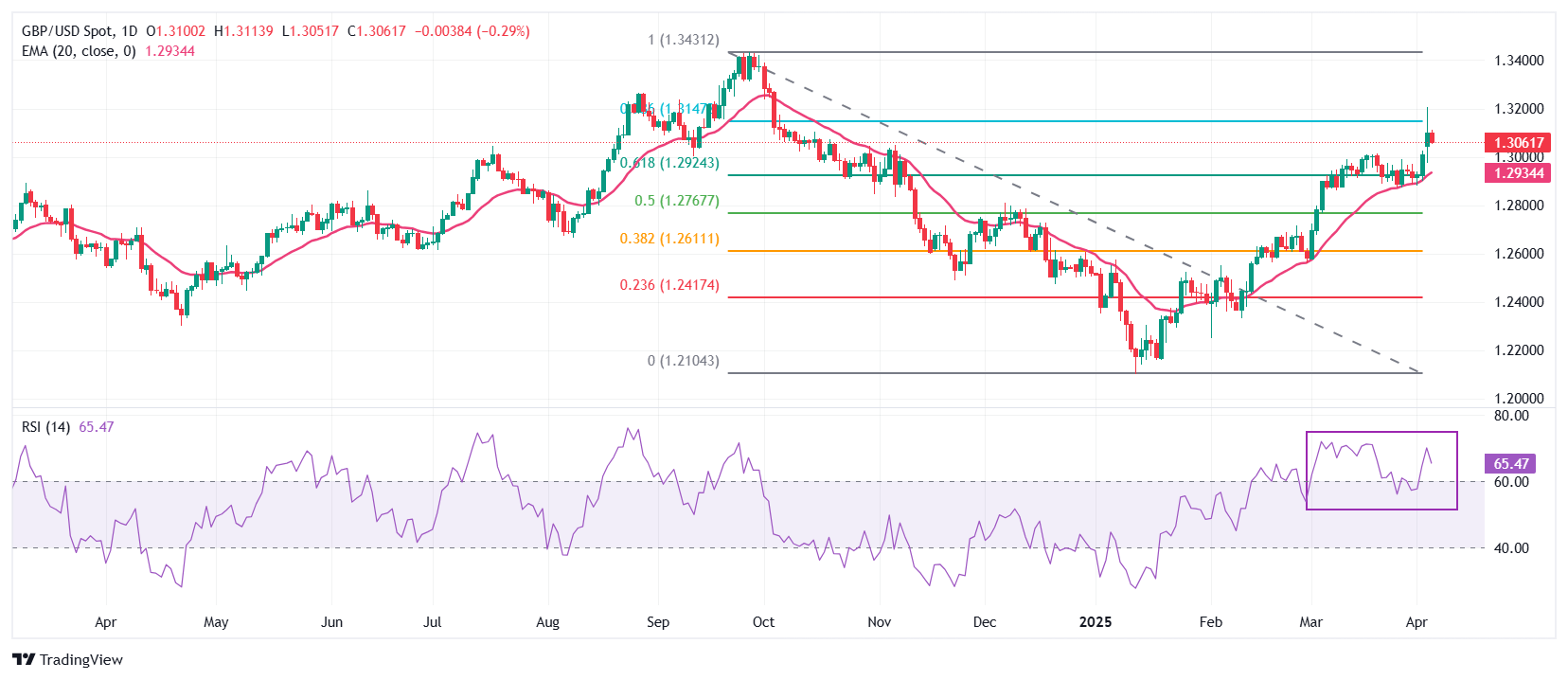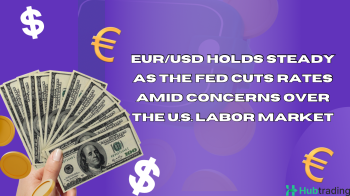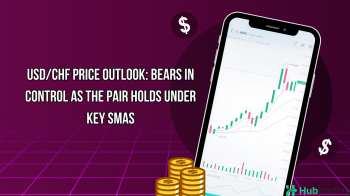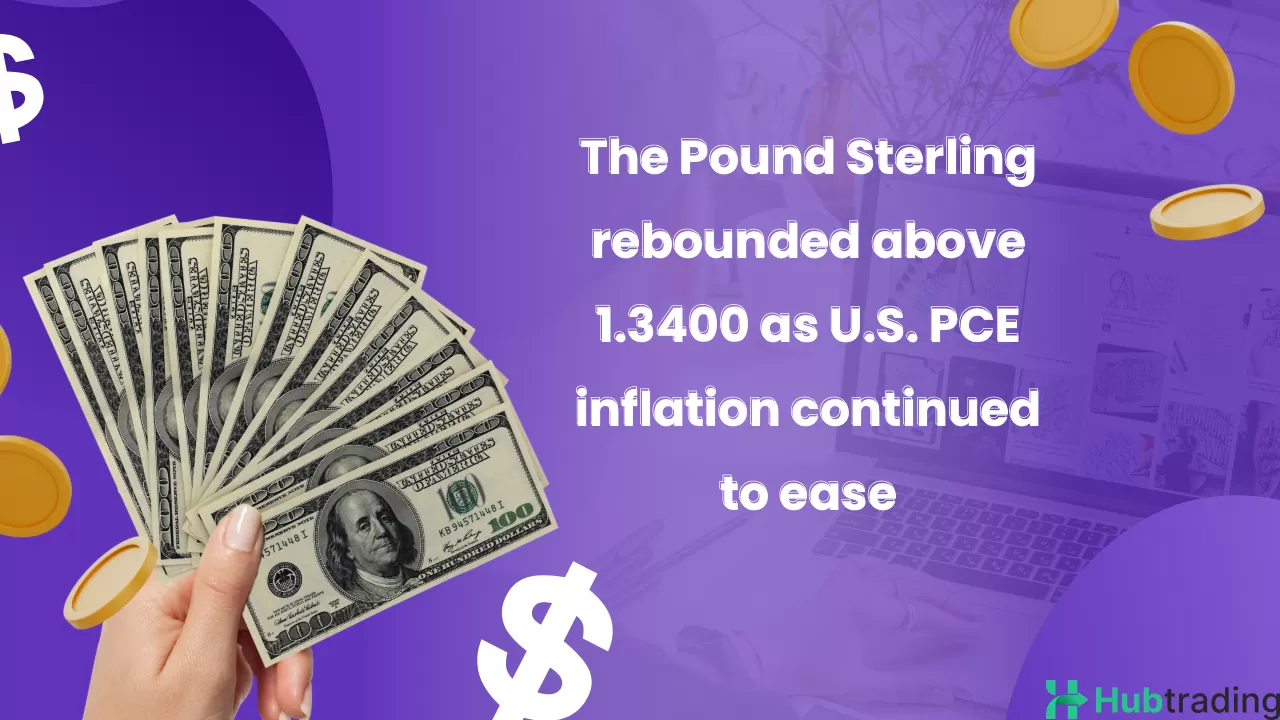The Pound Sterling (GBP) lags behind most major currencies, excluding the antipodeans, on Friday. The British currency faces pressure as investors anticipate significant strain on the UK economy from potential global risks, despite the country being in a relatively better position among US trading partners following the so-called "Liberation Day" on April 2. As globalization has interconnected nations, the UK can no longer function in isolation.
US President Donald Trump's decision to impose a 10% tariff on the UK, the lowest among all trading partners, has raised concerns. Investors fear that countries facing higher tariffs, like China, the Eurozone, India, and South Africa, will seek alternative export markets, potentially leading to dumping and making UK products less competitive globally.
Prior to Trump’s tariff announcement, the UK Office for Business Responsibility (OBR) warned that these policies could erode the government's fiscal buffer and shrink the economy by up to 1%.
Additionally, investors brace for rising inflation in the UK as business owners are expected to pass on the higher social security contributions. In the Autumn Statement, Chancellor of the Exchequer Rachel Reeves increased National Insurance contributions from 13.8% to 15%, effective this month. These inflationary fears contribute to growing market expectations that the Bank of England (BoE) will adopt a more cautious approach to monetary policy easing.
Daily Digest Market Movers: Pound Sterling Plummets Against US Dollar
- The Pound Sterling (GBP) reverses all of Thursday’s gains, falling to near 1.2970 against the US Dollar (USD) during European trading hours on Friday. The GBP/USD pair weakens despite the shockwaves caused by the announcement of reciprocal tariffs by US President Donald Trump earlier in the week.
- On the so-called "Liberation Day," Trump introduced a universal 10% baseline import duty, along with reciprocal tariffs on nearly all US trading partners, which were half of what they charge the US. These tariffs have shaken global equity markets, jeopardizing fresh investment plans by businesses.
- Market experts believe the full-scale import duties, coupled with potential countermeasures from US trading partners, could dampen global economic growth over the long term. On Thursday, International Monetary Fund (IMF) Managing Director Kristalina Georgieva highlighted that Trump's higher levies pose a "significant risk" to the global outlook amid sluggish growth. She urged the US and its trading partners to work together to "resolve trade tensions and reduce uncertainty."
- In the US, firms were already concerned about the potential impact of tariffs on business activity, and the harsher-than-expected duties are likely to weaken confidence further. The Institute for Supply Management (ISM) showed that the New Orders Index for March, in both the manufacturing and services sectors, came in significantly lower than February’s figures.
- On Friday, investors are focusing on the US Nonfarm Payrolls (NFP) data for March and Federal Reserve (Fed) Chair Jerome Powell’s speech, both scheduled for the North American session. The NFP report is expected to show the economy added 135K jobs, lower than February’s 151K. The unemployment rate is seen holding steady at 4.1%.
- The impact of the data is expected to be limited on market expectations for the Fed's monetary policy outlook, as officials are more concerned about inflationary pressures stemming from Trump's tariffs. Investors will be keen to hear Powell's speech for insights into how the Fed plans to address potential tariff-driven inflation and whether the central bank will adjust its 2% inflation target.
Technical Analysis: Pound Sterling Skids Below 1.3000
![]()
The Pound Sterling slides to near 1.2970 against the US Dollar on Friday, giving up the previous day's gains. The GBP/USD pair had rallied on Thursday after consolidating around the 61.8% Fibonacci retracement level, drawn from the late-September high to the mid-January low, near 1.2930. The 20-day Exponential Moving Average (EMA), which is upward-sloping near 1.2934, suggests a bullish near-term outlook.
The 14-day Relative Strength Index (RSI) remains above 60.00, signaling active bullish momentum. On the downside, the 61.8% Fibonacci retracement level at 1.2930 is a key support zone for the pair. On the upside, the September 26 high of 1.3434 serves as significant resistance.






